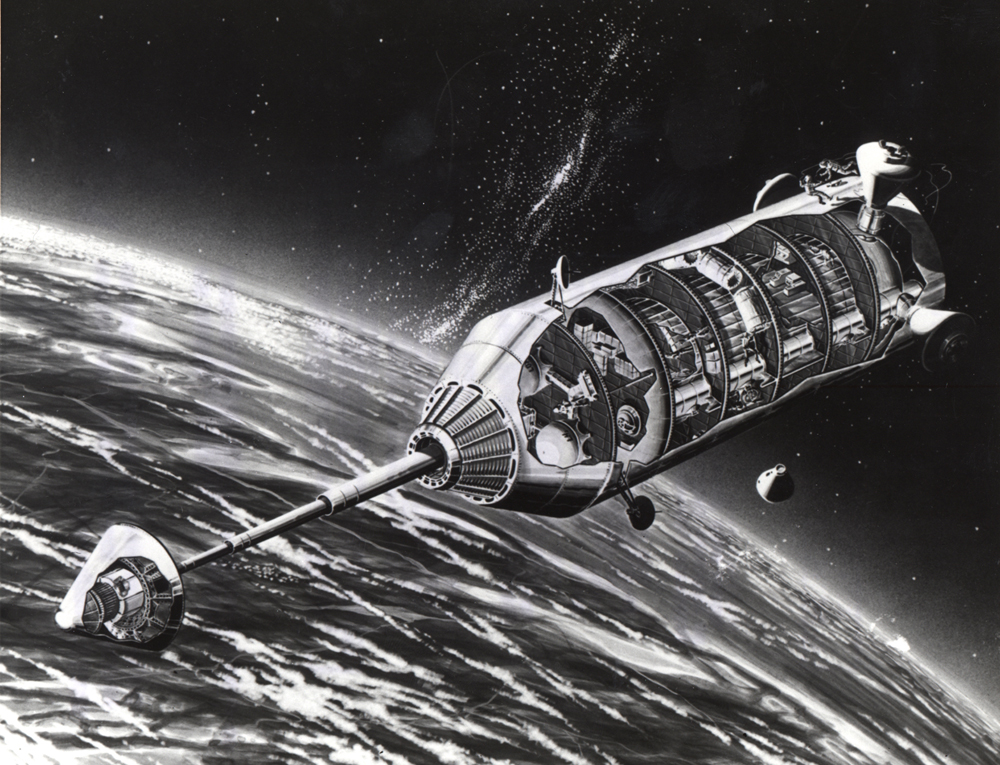Space History Photo: Orbit and Launch Facility Concept

In this historical photo from the U.S. space agency is a concept drawing of an orbit and launch facility. It was to use a nuclear SNAP-II nuclear power supply on the end of the long telescoping boom. Nuclear reactors were considered dangerous, which is why in this concept drawing it was located so far away from the habitat part of the station.
Creators envisioned the structure being built in orbit to allow assembly of the station in orbit which could be then larger than anything that could be launched from Earth. The two main modules were to be 33 feet in diameter and 40 feet in length. When combined the modules would create a four deck facility, 2 decks to be used for laboratory space and 2 decks for operations and living quarters. The facility also allowed for servicing and launch of a space vehicle. Though the station was designed to operate in micro- gravity, it would also have an artificial gravity capability.
[Far Out Space Station Concepts by NASA (Gallery)]
Each weekday, SPACE.com looks back at the history of spaceflight through photos (archive).
Get the Space.com Newsletter
Breaking space news, the latest updates on rocket launches, skywatching events and more!
Join our Space Forums to keep talking space on the latest missions, night sky and more! And if you have a news tip, correction or comment, let us know at: community@space.com.

The National Aeronautics and Space Administration (NASA) is the U.S. government agency in charge of the civilian space program as well as aeronautics and aerospace research. Founded in 1958, NASA is a civilian space agency aimed at exploring the universe with space telescopes, satellites, robotic spacecraft, astronauts and more. The space agency has 10 major centers based across the U.S. and launches robotic and crewed missions from the Kennedy Space Center in Cape Canaveral Florida. It's astronaut corps is based at the Johnson Space Center in Houston. To follow NASA's latest mission, follow the space agency on Twitter or any other social channel, of visit: nasa.gov.









